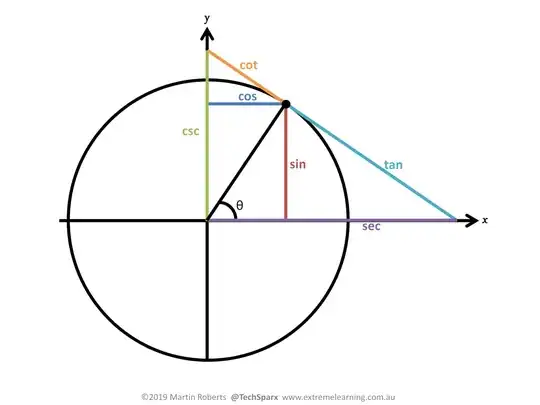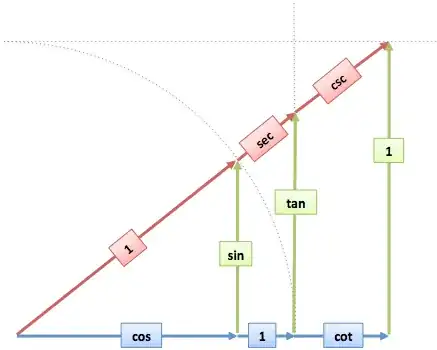The trigonometric functions $\sin$, $\cos$, $\tan$, $\cot$, $\sec$, and $\csc$, can each be interpreted as the lengths of certain lines in a unit circle. There are generally two collections of interpretations; they are illustrated in the following two pictures: 

I ask how both the interpretations in picture one, and the interpretations in picture two, can be shown. Note that I do not ask how the functions can be defined in terms of the unit circle, but why these definitions are equivalent to the definitions made using similar triangles (if that was not clear).